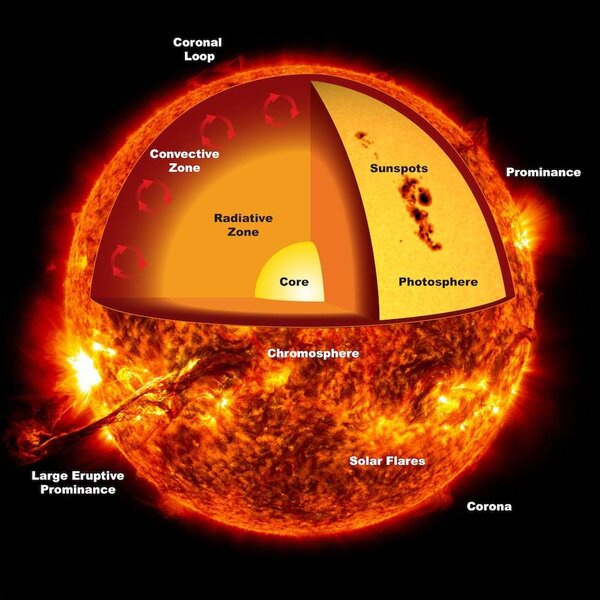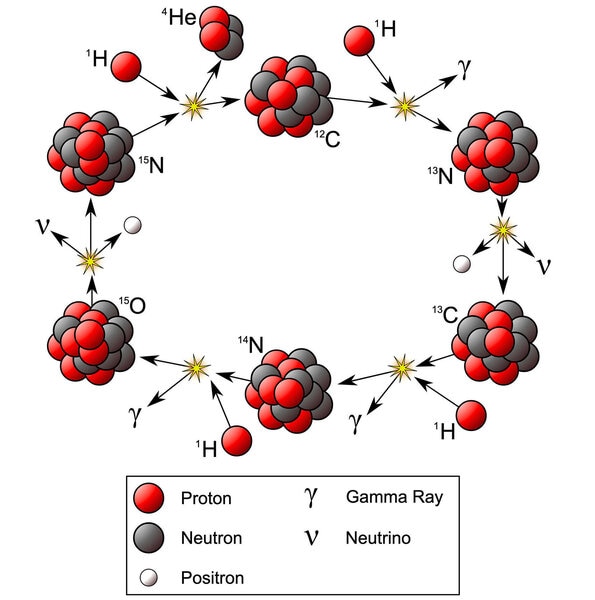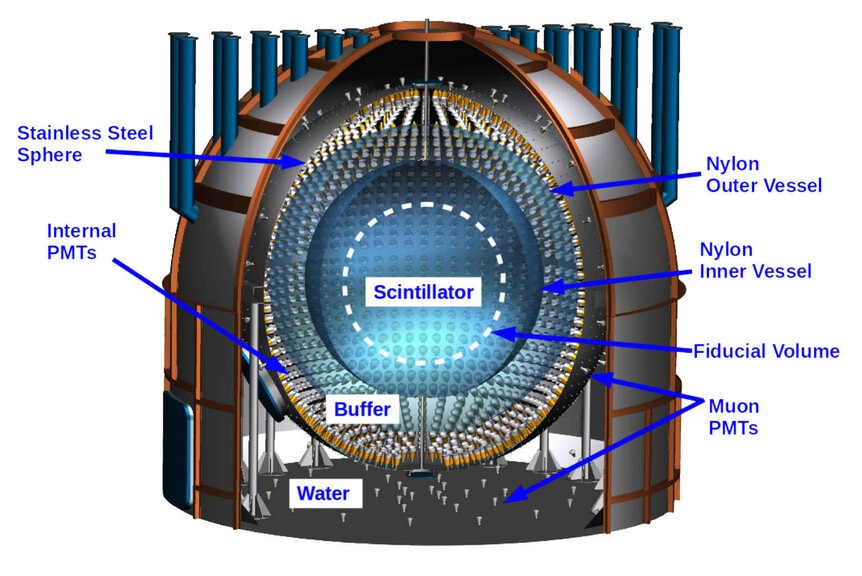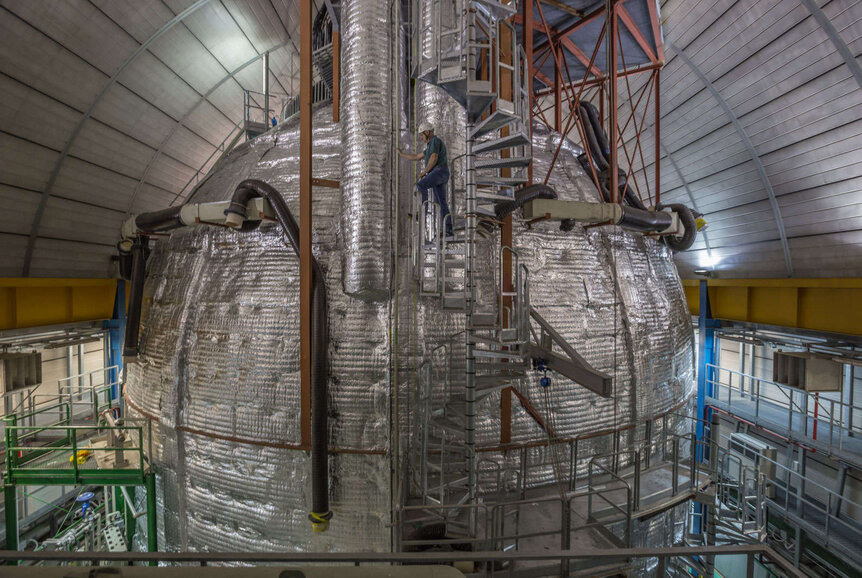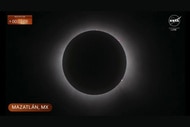Create a free profile to get unlimited access to exclusive videos, sweepstakes, and more!
After nearly a century, elusive CNO neutrinos are finally seen from the Sun
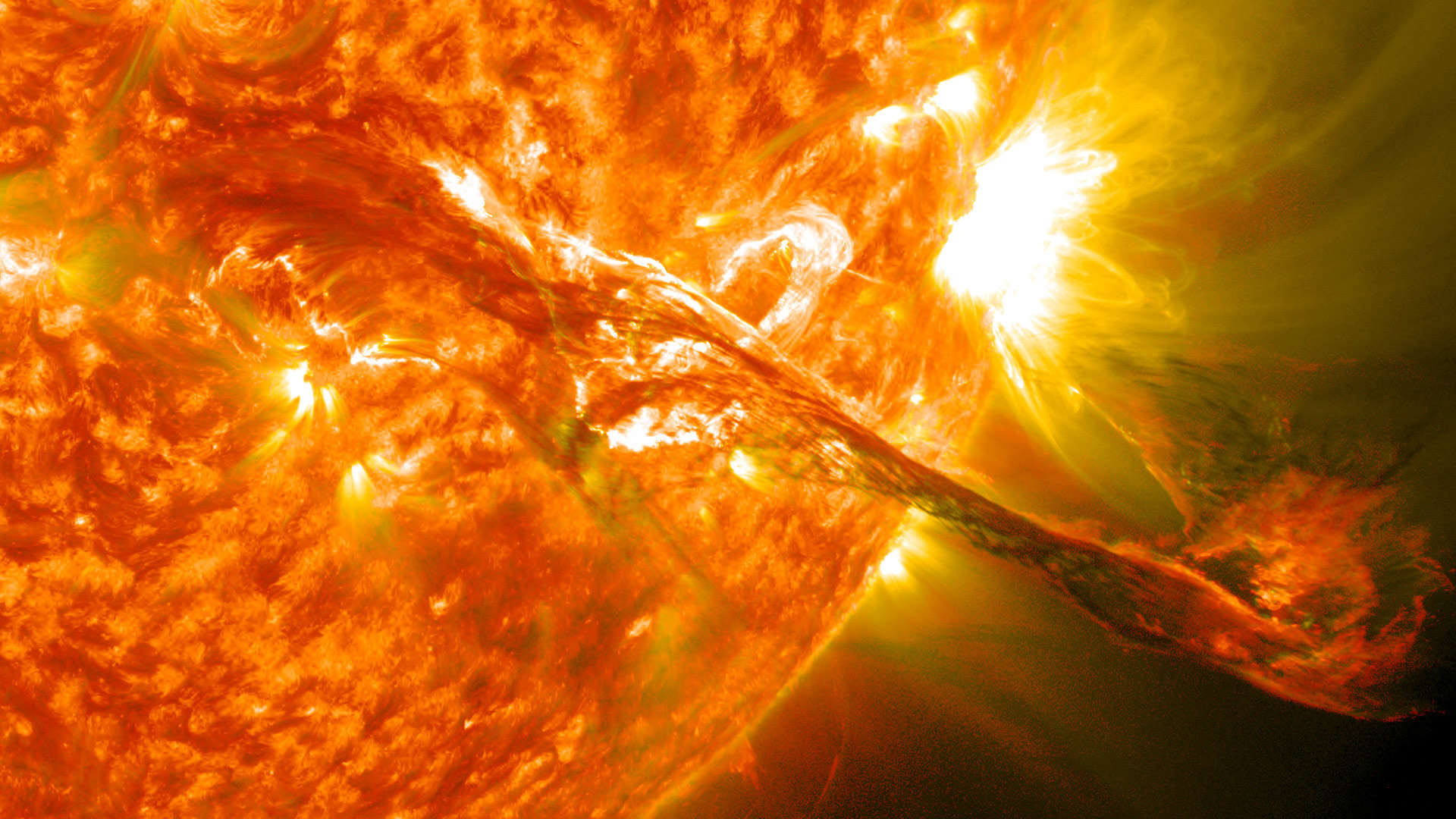
For the first time, scientists have detected neutrinos coming from the Sun’s core that got their start via the CNO process, an until-now theorized type of stellar nuclear fusion.
This is really cool, but it’ll take a bit of explaining.
Neutrinos are subatomic particles. Unlike the ones you’re more familiar with like protons and electrons, neutrinos don’t have a charge and have very low mass, and they really don’t like to interact with normal matter. A neutrino can pass right through the Earth as if it isn’t there.
Lots of different subatomic interactions can make neutrinos, including various types of nuclear fusion. The biggest source around us is the Sun, because it’s fusing hydrogen into helium in its core, making something like 1025 (10,000,000,000,000,000,000,000,000) neutrinos every second. They shoot out in all directions, and by the time they reach Earth about 60 billion pass through every square centimeter. Look at your thumbnail. Boom. About a hundred billion neutrinos just passed through it as you read this sentence.
We think there are two kinds of fusion going on in the Sun. 99% of it is from what’s called the proton-proton chain. It involves several steps, but in the end four hydrogen nuclei (really, just protons) fuse to form a single helium nucleus, and in the process releases neutrinos and a lot of energy — enough energy, in fact, to power a star.
The other 1% of fusion is from the CNO cycle, or the carbon-nitrogen-oxygen cycle. It too takes a bunch of steps, but involves those three elements in the process, and in the end does the same thing: four protons fuse to become helium, which also releases energy and sends a bunch of neutrinos on their way.
The Sun converts about 700 million tons of hydrogen into 695 million tons of helium every second; the leftover mass is converted to energy and lights up the Sun. That’s a lot of fusion, which is why the Sun makes so many neutrinos. Once created, they fly out of the Sun at very nearly the speed of light.
Some come to Earth. Most pass right through us because, again, they don’t like to interact with matter.
That makes them very hard to detect, but there are ways. For example, if a neutrino happens to slam into a molecule of 1,2,4-Trimethylbenzene — also called pseudocumene, a ring shaped carbon-based molecule — it’ll eject an electron, and after it does some physics a photon of light gets emitted. So if you have a tank full of this stuff, and surround it with very sensitive light detectors, the occasional flash from a neutrino event can be recorded.
It’s not that easy, of course. Very few neutrinos will interact with the pseudocumene. So you need a big tank, and you need to build it underground because cosmic rays hitting our atmosphere create muons which can also create flashes which interfere with your results, and you need to surround it with an even bigger tank of water to absorb the muons that still get through.
Sill, that’s exactly what an international collaboration of scientists did. The Borexino neutrino observatory is 1400 meters under the rock below the Gran Sasso mountain in Italy. It has an 8.5 meter wide nylon balloon filled with 280 tons of pseudocumene, surrounded by a tank of water, surrounded by over 2200 very sensitive photon detectors.
They turned everything on, then waited. Over the course of July 2016–February 2020 (1072 days), they painstakingly recorded all the events, and had to go through heroic efforts to prevent all manners of other reactions that also create little light flashes from interfering with their experiment. They also had to distinguish proton-proton chain neutrinos from ones made in the CNO cycle, but the neutrinos have different energies, which makes it possible to separate them out.
They just announced their results: They detected the CNO neutrinos! About 20 per day interacted with the pseudocumene — 20 per day, when sextillions of them had passed through! — about what you’d expect from theory.
In fact, it’s important to know that until now, we only had theory telling us the CNO cycle was occurring. There’s no way to get direct measurements of the Sun’s core, buried under hundreds of thousands of kilometers of, well, Sun… except through neutrinos. The CNO cycle was first theorized in the 1930s, and it’s taken this long to finally detect them.
There is some uncertainty in the measurements, but they found that they can rule out these neutrinos not being from the CNO cycle at 99% certainty. In other words, they are very unlikely to be from anything else.
This is an important discovery for a lot of reasons. For one thing, while the proton-proton chain dominates in the Sun, in stars with more than about 1.3 times the Sun’s mass the CNO cycle dominates (it kicks in strongly at higher temperatures), so knowing how it works in the Sun tells us about other stars.
Also, the presence of heavier elements (what astronomers misleadingly call metals, meaning any element heavier than hydrogen and helium) can affect the fusion rate in the Sun’s CNO cycle, and the amount of these metals isn’t perfectly well known; different methods to measure them yield slightly different amounts, but enough to mess up what we know about the fusion in the core. This experiment agrees with ones that find a lower metal content. That has a ripple effect on a lot of other ideas, including details on how we think the Sun and planets formed, how the Sun ages, and how it will die.
All that, from less than two dozen neutrinos a day, while countless more go undetected. It never stops amazing me how clever we humans can be, able to figure out a way to see the invisible, and literally sampling the Universe as it passes right through us.
